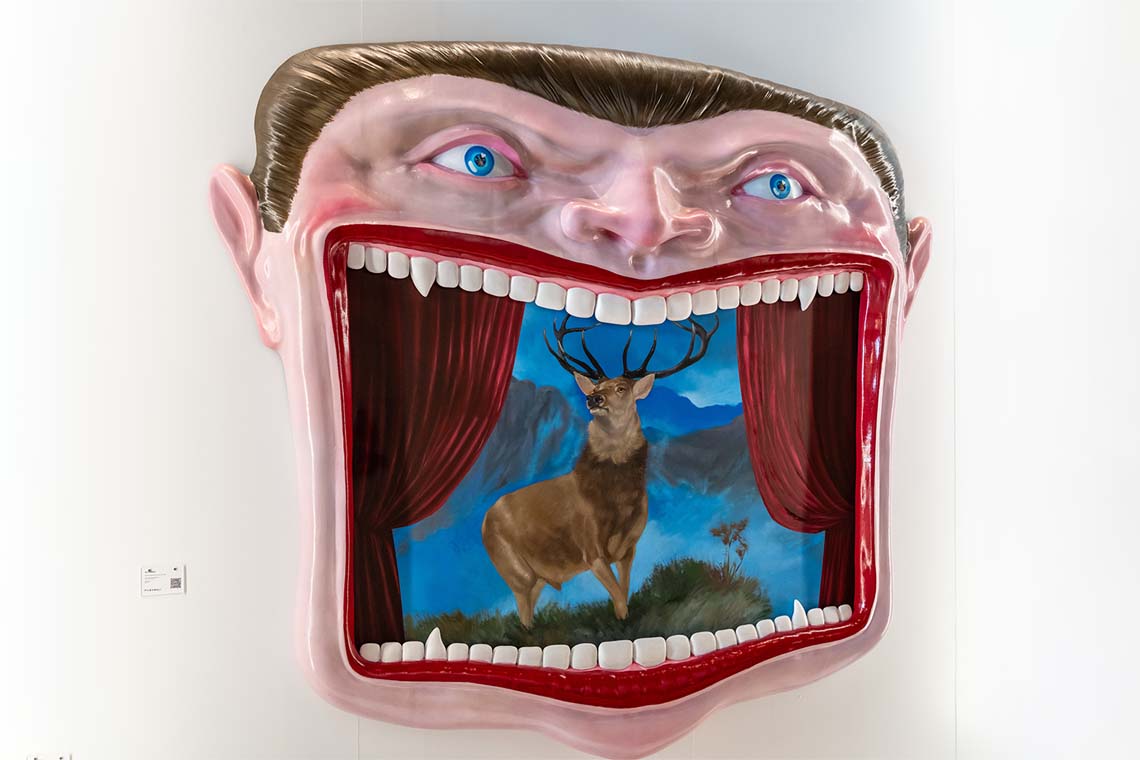Despite Economic Challenges, This Year’s Contemporary Istanbul Highlights the City’s Dynamic Art Scene, Blending Established and Emerging Talent and Setting a Hopeful Tone for Its Upcoming 20th Edition Next September.
Perched high on one of Istanbul’s iconic seven hills, the Beyazıt Tower — an 18th-century fire watchtower that now serves as a weather beacon — is a nightly spectacle. Its changing colors predict Istanbul’s weather: red for snow, yellow for fog, green for rain, and blue for clear skies. This year, the tower glowed a hopeful blue as the city’s premier art event, Contemporary Istanbul, opened across the Bosphorus in the historic Ottoman shipyards, newly revamped into a lavish cultural space with stunning views of the Golden Horn. Along its banks, the outdoor sculpture exhibition “The Yard” made a lively return, marking its fourth edition under the curation of Marc-Olivier Wahler, director of the Musée d’Art et d’Histoire Geneva. With animal-themed sculptures gracing the outdoor space, Wahler’s curatorial choice imparted a zoo-like aura to the exhibit. Standouts included wrinkled basalt sculptures from Kazım Karakaya that seemed as ageless as rock itself and sleek steel forms from the same artist, whose pieces added a grounded touch to the overall whimsical display.
A Global Gathering: Showcasing Galleries from 14 Countries
The 19th Contemporary Istanbul brought together 53 galleries from 14 different countries, this year with a distinct spotlight on Spanish and Latin American art. Among the highlights were expressive abstract pieces from the Madrid-based gallery José de la Mano, especially the works of Joseph Terdjan, a Lebanese-Turkish modernist whose creations drew viewers with their raw intensity. Alexandra Rehder, represented by São Paulo’s Andrea Rehder Arte Contemporânea, captivated audiences with her layered botanical collages, blending photography and acrylic for a mesmerizing effect. The fair also hosted a mini-retrospective titled Born in the Seventies, curated by former Museo Reina Sofía director Juan Manuel Bonet, featuring Spanish artists like Guillermo Mora and María Beltrán. While reactions to this selection were mixed, it offered insights into the development of Spanish modern art. Long-time participant Barcelona’s Galeria Joan Gaspar also made a successful return, showcasing classic works by Miró, Picasso, and Dalí, cementing its commitment to Contemporary Istanbul since 2015.
Istanbul’s Emerging Art Scene and Trusted Institutions
Istanbul’s homegrown galleries also played a significant role in the fair, though it was mainly the established names that held the spotlight. Among the emerging artists, Sine Içli’s floral ceramics at OG Gallery were a refreshing entry, bringing a soft, organic touch to the fair. However, it was the city’s art veterans like Pilevneli Gallery that stole the show with vibrant, edgy pieces by Ali Elmacı. Elmacı’s playful works ranged from whimsical wall sculptures to hand sculptures clutching floral bouquets, with campy yet engaging pieces that left a lasting impression on fairgoers. Equally delightful were various sculptures crafted from recycled materials: Miguel Aparici’s dachshunds, with a dark academia aesthetic, and Edgar Grigoryan’s striking “firefly” at Galeri 77, both stood out for their inventive use of found objects and their animal charm.
International Appeal and Bohemian Touches from Abroad
While many local galleries showcased traditional works, several international booths broke the mold, bringing a breath of fresh air to the event. Two Prague galleries, in particular, left a notable impression. Trafo Gallery’s display mixed painted metal reliefs by Pavel Dušek against velvety pink walls, balanced by Ester Knapová’s lush green dreams, while Karpuchina Gallery offered quirky, playful pieces by Julius Reichel. His mixed-media works featured dinosaurs, cosmonauts, and alien figures crafted from fabric and wood, charming viewers with their imaginative flair. Milan’s Galleria Studio G7 presented a more minimalist selection, including David Tremlett’s geometric works and Gregorio Botta’s delicate creations made with natural pigments, alabaster, and wax.

Looking to the Future: Contemporary Istanbul’s 20th Edition
In a significant shift, next year’s 20th edition of Contemporary Istanbul will be permanently moved to September, aligning with the Istanbul Biennial and a newly established art festival along the Golden Horn. This change symbolizes a renewed commitment to fostering Istanbul’s cultural scene despite the country’s ongoing economic crisis. This year’s fair saw a strategic focus on attractively priced works, aimed at encouraging a new generation of art collectors to engage with contemporary art. The atmosphere remained upbeat, with many galleries reporting strong sales and a noticeable interest from younger buyers. For the Istanbul art scene, the outlook appears promising, echoing the blue-lit optimism of the Beyazıt Tower — clear skies ahead for a city where art thrives against all odds.


